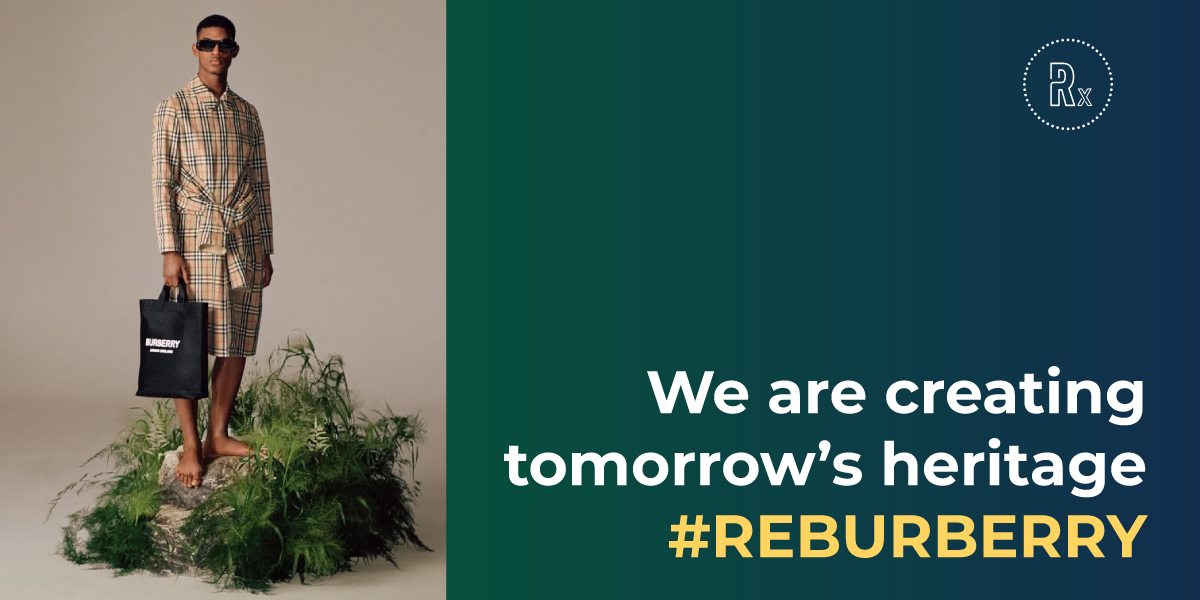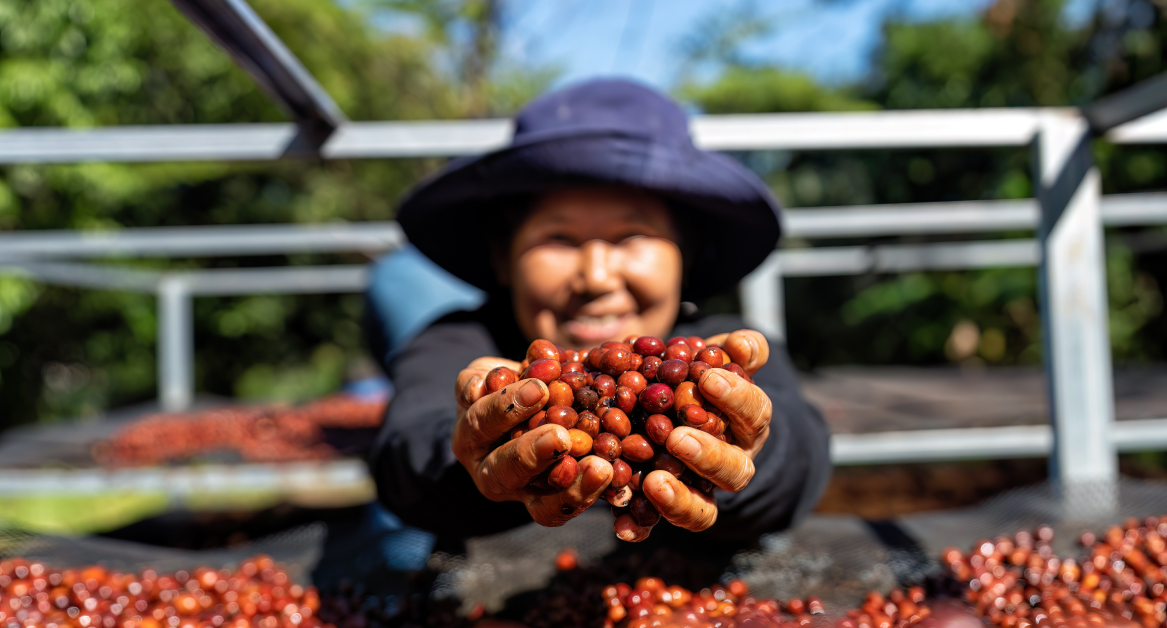In today’s sustainability-driven era, the spotlight is on carbon insetting, a strategy that embeds carbon reduction within a company’s operations. This approach, distinct from carbon offsetting, reduces emissions and fosters climate actions.
💡 Read more: Inset vs Offset: Understanding the Differences in Carbon Strategies
From Nespresso’s agroforestry projects to L’Oréal’s sustainable sourcing program, read on as we explore impactful carbon insetting examples in agriculture from renowned companies highlighting the sustainable insetting practices in achieving a carbon-neutral future.
Nespresso’s Agroforestry carbon inset project
About Nespresso
Nespresso, a globally recognized coffee brand, has made significant strides in integrating sustainability into its business model. Known for its premium coffee products, Nespresso has committed to enhancing the quality of its coffee and ensuring its production processes contribute positively to the environment and local communities.
About Nespresso’s Agroforestry carbon inset project
Launched in 2014, Nespresso’s Agroforestry Carbon Inset Project reflects a proactive approach to climate change and sustainability. The initiative focuses on planting native trees in coffee farming landscapes, promoting regenerative agriculture practices.
This strategy not only improves soil health, water provision, and biodiversity conservation but also protects the premium quality of coffee. It’s an embodiment of carbon insetting, a mechanism that compensates for the residual GHG emissions through the transition to agroforestry models, creating a virtuous cycle that bridges climate mitigation and adaptation.
Key actions
- Planting nearly three million trees across 5,000 hectares by the end of 2019, with an expansion involving an additional two million trees in five more countries.
- Training in shade tree management as part of the broader project.
- These actions aim to sequester carbon effectively, protect water sources, prevent erosion in steep coffee farms, and diversify income for coffee producers through the inclusion of fruit trees.
Impact on carbon emissions
By adopting these agroforestry models, Nespresso’s project makes a tangible impact on carbon sequestration. The number of trees planted significantly contributes to the absorption of carbon dioxide, directly reducing GHG emissions. This initiative aligns with recognized standards like the VCS standard and Ecocert-Reforestation solitaire IPS (Insetting Programme Standard), ensuring credible and measurable impact.
Community and environmental benefits
The project extends its benefits beyond carbon insetting:
- Enhances local community resilience against climate change.
- Diversifies income sources for coffee farmers, ensuring economic sustainability.
- Contributes to biodiversity conservation, creating healthier ecosystems.
The scale and scope of Nespresso’s project imply a complex coordination of resources, training, and consistent monitoring to ensure the success and longevity of the insetting initiatives.
L’Oréal’s sustainable sourcing program
About L’Oréal
L’Oréal, a leading global beauty and cosmetics company, has taken significant strides toward sustainability, particularly in its sourcing practices. Renowned for its diverse range of beauty products, the company has focused on integrating environmental and social responsibility into its core operations.
L’Oréal’s sustainable sourcing program for shea butter
In 2016, L’Oréal launched a sustainable sourcing program for shea butter, one of its key ingredients, in Burkina Faso. This initiative is a part of L’Oréal’s broader Solidarity Sourcing plan and aligns with the company’s Carbon Balanced ambition. Burkina Faso, a country with a substantial population living below the poverty line, is home to one of the world’s largest shea tree populations. The program’s objectives include providing fair, direct income to shea-nut gatherers, creating local value through best practices training, and environmental protection through the preservation of shea trees.
Key actions
- L’Oréal partnered with communities in Burkina Faso for sustainable shea butter sourcing.
- The company facilitated the distribution of 1,500 improved cookstoves, replacing traditional stoves used for boiling water with scald shea nuts. This measure significantly reduced wood consumption, combating deforestation and cutting carbon emissions.
Impact on carbon emissions
The implementation of improved cookstoves was a key component in L’Oréal’s climate action. This initiative helped avoid the emission of over 2,300 tonnes of CO2 annually and reduced timber cutting by nearly 800 tonnes in 2016.
Community and environmental benefits
- 100% of L’Oréal’s shea butter has been sustainably sourced from Burkina Faso since 2014, contributing to the empowerment of 39,100 women by 2020.
- The sustainable sourcing program significantly contributed to energy poverty alleviation and deforestation reduction.
- It also halved household wood consumption and curbed carbon emissions, leading to environmental benefits such as preserving biodiversity and protecting shea trees.
L’Oréal’s Sustainable Sourcing Program not only addresses environmental concerns like deforestation and carbon emissions but also enhances the livelihoods of local communities. As businesses globally move towards more sustainable practices, L’Oréal’s approach offers a model for integrating environmental stewardship with community development.
Burberry’s regeneration fund
About Burberry
Burberry, a renowned luxury fashion brand, has shown a strong commitment to environmental sustainability through its innovative initiatives. Known for its iconic fashion pieces, Burberry has focused its efforts on developing sustainable practices within its business model, particularly in its sourcing and production processes.

About Burberry regeneration fund
Established in 2020, the Burberry Regeneration Fund aims to support various carbon offsetting and insetting projects. This fund is a part of Burberry’s broader strategy to promote biodiversity, restore ecosystems, and support local communities. For its first insetting project, Burberry partnered with PUR Projet to implement a regenerative agricultural program with wool producers in Australia. The project is designed to enhance soil carbon capture, bolster watershed and soil health, and promote biodiversity.
Key actions
- Implementation of a regenerative agricultural program in Australia to improve carbon capture and promote biodiverse habitats.
- Expansion of support for farming communities, focusing on farm-level certifications and training in areas where Burberry sources its raw materials.
- Development of regenerative supply chains, applying holistic land management practices to grazing or farming systems.
Impact on carbon emissions and biodiversity
Burberry’s initiatives, particularly the regenerative agricultural program, directly contribute to carbon sequestration and biodiversity enhancement. The company conducted a biodiversity baseline assessment, highlighting the significant impact of materials like leather, cashmere, and wool on biodiversity and carbon footprint. This assessment guides Burberry’s efforts in applying Nature-Based Solution Principles to its funded projects, ensuring positive outcomes for biodiversity.
Community and environmental benefits
- The Regeneration Fund supports initiatives that not only address carbon emissions but also enhance the livelihoods of local communities.
- Burberry’s commitment to the LEAF Coalition and its partnership with the Savory Institute’s Land to Market program highlights its role in global regeneration and conservation efforts, extending beyond its immediate value chain.
Burberry’s Regeneration Fund represents a shift in how luxury fashion brands can actively contribute to environmental sustainability.
Ben and Jerry’s tree planting in Uganda
About Ben and Jerry’s
Ben and Jerry’s, known for its socially responsible business model and delicious ice cream, extends its commitment to environmental sustainability through various global initiatives. The company has been actively involved in projects that contribute to carbon reduction and support local communities.
Ben and Jerry’s collaboration with PUR projet
In Uganda, Ben and Jerry’s, in collaboration with PUR Projet, is financing the planting of 100,000 native trees to support smallholder vanilla farmers in the Rwenzori region. This initiative is designed to help these farmers diversify their income by selling fruit and timber from the trees, which include species like jackfruit and African cherry.
The project is part of a broader approach to address the challenges posed by climate change to agriculture, particularly in areas vulnerable to its impacts.
Key actions
- Planting 100,000 native trees in Uganda, including jackfruit and African cherry, to assist vanilla farmers.
- The initiative focuses on sustainable forest management, ensuring that the planting and harvesting of trees contribute to carbon mitigation.
- Providing shade and ecosystem benefits for vanilla crops through intercropping helps mitigate the effects of climate change, such as heat, prolonged droughts, and irregular rainfall patterns.
Impact on carbon emissions and biodiversity
The project contributes significantly to carbon sequestration through the growth of native trees. Sustainably managed working forests, as demonstrated by this project, are known to offer substantial carbon mitigation. Additionally, by intercropping these trees with vanilla, the initiative promotes biodiversity and strengthens the resilience of local ecosystems.
Community and environmental benefits
- Diversification of income sources for smallholder farmers through the sale of fruit and timber.
- Enhancement of local biodiversity and protection of critical ecosystems.
- Contribution to the fight against deforestation and climate change.
Ben and Jerry’s approach provides a model for other companies to follow, highlighting the importance of sustainability collaboration in business practices and the potential for positive change through targeted environmental initiatives.
Pioneering a greener future through carbon insetting
Companies like Nespresso, L’Oréal, Burberry, and Ben and Jerry’s are leading the global sustainable campaign, demonstrating that corporate responsibility extends beyond traditional business models.
These examples of carbon insetting not only offset carbon emissions but also enhance biodiversity, improve community livelihoods, and promote sustainable land use. They are solid proof of the positive impacts that thoughtful, well-implemented sustainability strategies can have.
Ready to join in the Carbon Neutral movement? Contact us now!



